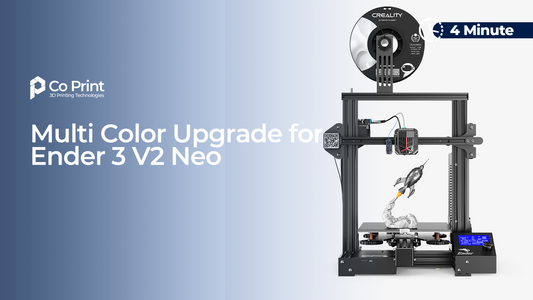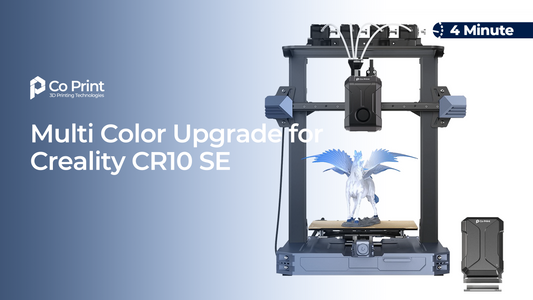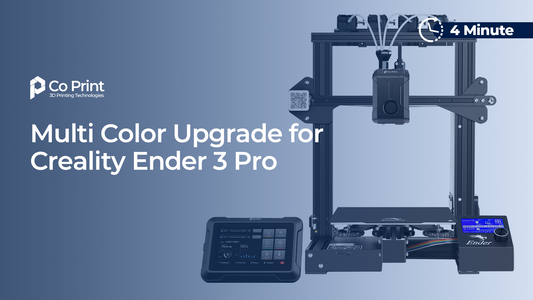In the 3D printing process, everything might be going smoothly until suddenly the filament flow stops, and your print fails. This issue could be caused by one of the most common problems faced by 3D printer users: nozzle clogging. Nozzle clogs can severely impact print quality, leading to missing layers, irregular filament flow, or completely failed prints.
This problem is often caused by factors such as incorrect temperature settings, low-quality or moisture-absorbed filament, insufficient maintenance, and residues from long-term use. A clogged nozzle not only causes time loss but also results in material waste and can decrease your printer’s performance.
Regular maintenance, proper filament selection, and correct print settings can help prevent such clogs. In this article, we will explore the causes of nozzle clogs, the most effective measures to prevent them, and methods for cleaning a clogged nozzle. This way, you can use your printer in a long-lasting and efficient manner and enjoy high-quality prints.
Causes of Nozzle Clogs
1)Use of Low-Quality or Moisture-Absorbed Filament
-
Low-quality filaments or those containing foreign particles can clog the nozzle.
-
Moisture absorption by filament can lead to irregular extrusion during printing.
2)Incorrect Temperature Settings
-
Printing at too low a temperature can prevent the filament from fully melting, causing it to accumulate inside the nozzle.
-
On the other hand, excessively high temperatures can lead to carbonization, which can cause clogs.
3)Errors During Filament Change
-
Loading new filament without completely cleaning the old one can cause particles to get stuck in the nozzle.
4)Small Nozzle Diameter
-
Nozzles with smaller diameters are more likely to clog when using filament with larger particles or filled materials.
5)Cooling and Heating System Issues
-
Insufficient cooling can result in uneven melting of the filament.
-
Misalignment of the nozzle and hotend can negatively impact extrusion.
6)Nozzle Quality
-
The quality of the nozzle is an important factor in preventing clogs. Low-quality nozzles can wear over time, increasing the risk of clogs. Nozzle types include standard, hardened steel, and heated-bottom options. Hardened steel nozzles are more durable and reduce the risk of clogs. Co Print's Chromahotend Hardened Nozzle model, made from durable hardened steel, helps prevent clogs and offers longer-lasting use.
Methods to Prevent Nozzle Clogs
1)Use of Non-Moist Filament
-
Store filament in dry, airtight containers to prevent moisture absorption. You can control the moisture level by using silica gel bags.
-
Purchase high-quality filament from reliable manufacturers.
2)Use Correct Temperature Settings
-
Each filament type has a recommended temperature range. Print using the filament's recommended temperature range.
-
Gradually increase the temperature to ensure optimal flow.
3)Regular Nozzle and Hotend Maintenance
-
Regularly cleaning the nozzle prevents residue buildup. Especially if you clean the residue right after printing, you can avoid long-term clogs.
-
Regularly cleaning and lubricating your printer according to the maintenance guide ensures that mechanical parts work correctly and helps prevent clogs. Check the hotend, nozzle, and extruder mechanisms at regular intervals.
4)Use the Cold Pull Method When Changing Filament
-
The cold pull method involves pulling the filament out without heating it. During this process, residue inside the nozzle is pulled out. Completely removing the filament ensures that new filament flows smoothly and prevents clogs.
5) Use of Larger Nozzles
-
If you are using filament with fillers or composites (e.g., wood or metal-filled filaments), you may prefer larger nozzles. These types of filaments can clog smaller nozzles. While 0.4 mm nozzles are standard, using larger nozzles (such as 0.6 mm or 0.8 mm) can reduce clogging risks and increase printing speed.
Solutions to Apply in Case of Clogs
1) Cold Pull Method
-
Cold pull helps clean out residues inside the nozzle by allowing the filament to melt and then be pulled out. This method is especially effective for PLA and nylon filaments. Heat the nozzle to around 190°C, wait until the filament cools down, then gently pull it out. This process will remove the residues and resolve the clog.
2) Cleaning with a Needle
-
Sometimes very small clogs occur in the nozzle, which can be cleaned manually. Carefully clean the nozzle using a thin needle or wire. Doing this while the nozzle is hot helps the residues come out more easily.
3) Increasing Temperature
-
Clogs can sometimes occur if the filament is not melting at the correct temperature. You can improve the melting of the filament by increasing the nozzle temperature by 10-20°C. This temperature increase will allow the filament to flow more smoothly in the clogged areas.
4) Printing at Higher Temperatures
-
If the clog is severe, you can heat the nozzle to 240-250°C to melt the clogged filament. This method can be effective for resolving stubborn clogs.
5) Changing Filament
-
The cause of the clog could be low-quality or brittle filament. After removing the filament and cleaning the nozzle, add new filament. This method keeps the nozzle clean and prevents new clogs during printing.
6) Using Heated Cleaning Tools
-
Some specialized cleaning tools heat the nozzle to melt the residues. These can be an effective option for eliminating clogs.
7) Cleaning with Compressed Air
-
If the clog is not too severe, you can try cleaning it with compressed air. This method is a quick way to expel residues and adhesives. However, if not applied carefully, excessive pressure can damage the nozzle.
To prevent nozzle clogs in 3D printers, regular maintenance, proper filament selection, and careful temperature settings are crucial. In this blog, we’ve covered the causes of nozzle clogs, ways to prevent them, and methods to clean clogged nozzles. If you want to enhance your 3D printer’s performance, choosing high-quality nozzles will make a significant difference. With the high-quality nozzles offered by Co Print, you can achieve a more efficient production process with fewer issues during printing.




